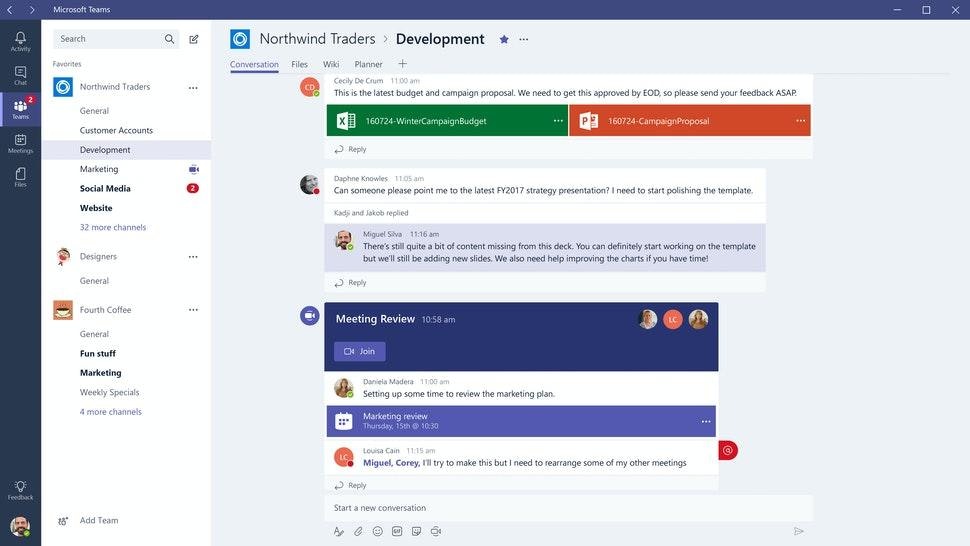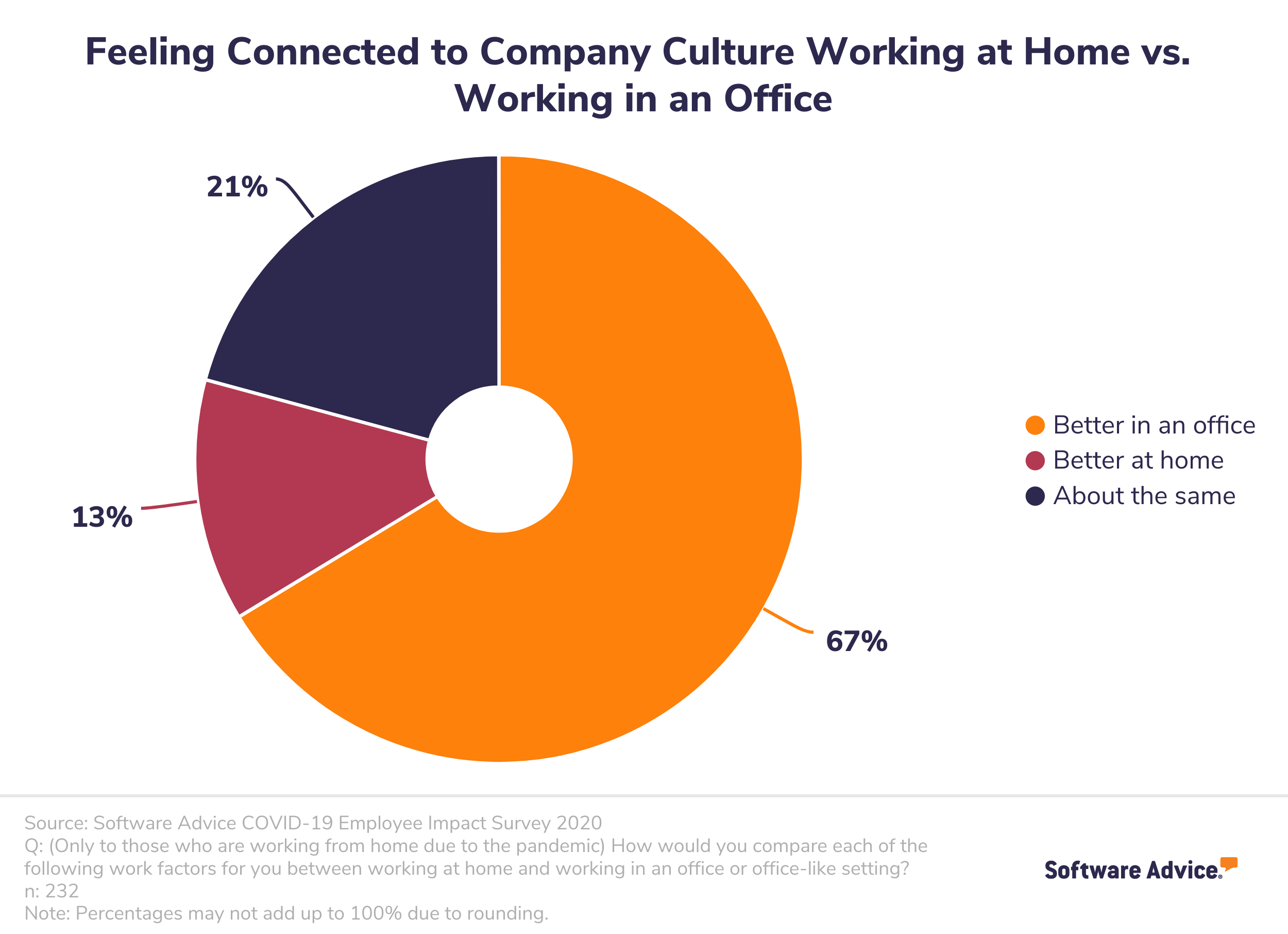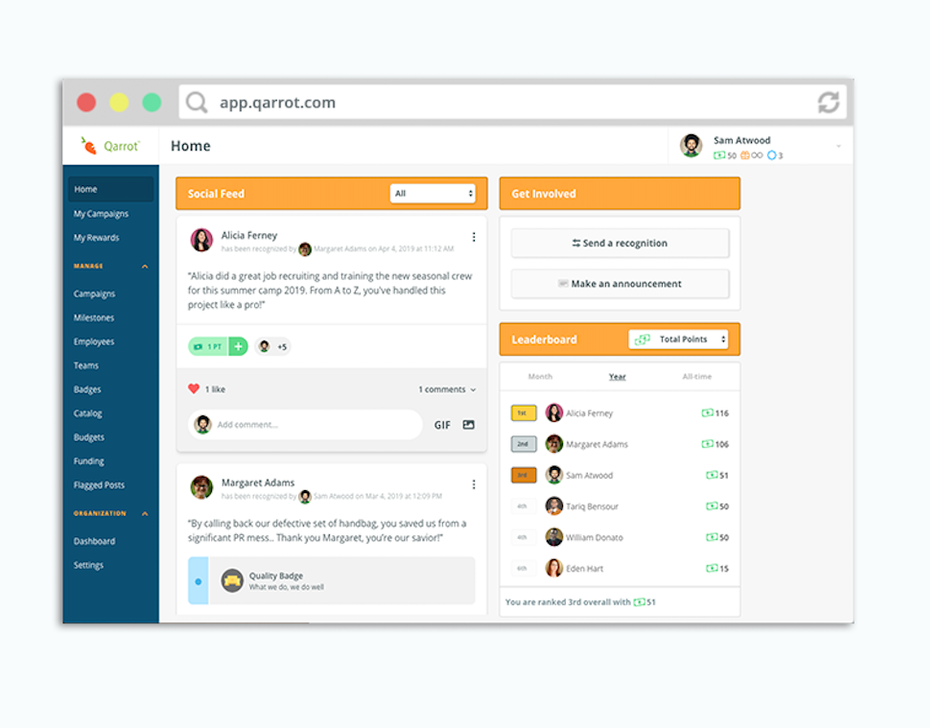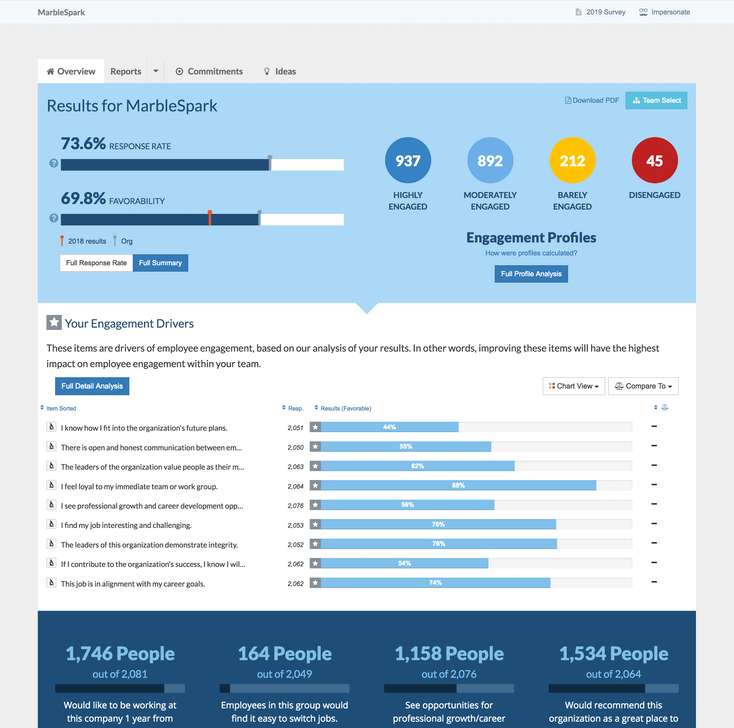Overcoming the 5 Biggest Challenges of Managing Remote Employees
Entering a new year full of uncertainties for small businesses, there is at least one thing we know for sure: Remote work is here to stay.
Brought to the mainstream out of necessity by the COVID-19 pandemic, the advantages of having employees work remotely have become too big to ignore. There’s no going back now, and we have the stats to prove it:
49% of HR leaders in an August 2020 survey* tell Software Advice they plan to hire more fully remote workers when the pandemic is over. 46% also plan to allow employees to work remotely more often.
56% of employees in a June 2020* survey tell Software Advice they would prefer to work from home more often when the pandemic is over, with an additional 17% preferring to work from home permanently.
Of course, this means that the many unique challenges of managing remote employees are also here to stay. Fail to figure out solutions to them as a manager, and you risk lower productivity and engagement from your remote employees at best, and higher remote employee turnover at worst.
Here, we’ll look at five of the biggest challenges of managing remote employees, and the strategies and software that can help you overcome them.
Here’s what we’ll cover:
Challenge #1: Facilitating collaboration and communication
Challenge #2: Connecting remote employees to the company culture
Challenge #4: Reducing remote employee burnout
Challenge #5: Being a fair manager
Challenge #1: Facilitating collaboration and communication
Collaboration and communication has been cited as a top struggle by remote employees in all three years of Buffer’s annual State of Remote Work survey, and it’s not hard to understand why. Any manager will readily admit operating in different locations (and even different time zones) is a poor substitute for convening together in a room to discuss ideas and make decisions.
Technology can at least help bridge the communication gap between remote employees. Specifically, there are four types of communication tools on-site employees have at their disposal that need a software equivalent for remote employees to be just as effective:
The meeting room: You need software that can bring your remote employees together in one (virtual) place for face-to-face conversations. The right video conferencing software can accomplish this.
The whiteboard: Sharing and tracking ideas is incredibly difficult to do remotely. Look into whiteboard software or document management software to help your remote employees with their brainstorming needs.
The task list: You need software to assign work duties and keep everyone in-the-know on the progress of important projects. Consider task management software or project management software for this need.
The water cooler: Workers (even remote ones) need a place to casually conversate. Without the ability to walk by someone’s desk or run into them in the hallways, we recommend collaboration software here for those quick interactions.

Remote employees can have discussions and share files in Microsoft Teams (Source)
Don’t leave remote workers to “figure it out” with these tools though. Managers should schedule time with their remote teams and software vendors to ensure every remote employee understands all of the functionality at their disposal to fuel proper collaboration and communication.
On a tight budget? These top-rated free remote working software options are still packed with useful features to help your small business.
Challenge #2: Connecting employees to the company culture
Company culture—that intangible set of values and behaviors that defines how your workforce operates and interacts with one another—is the lifeblood of any organization. In a survey by Nulab, 83% of employees say they weigh company culture when deciding where to work, while 90% say company culture is important towards being productive.
However, the further a worker is from where that culture is established and practiced, the more they feel the strain of its absence. Two-thirds of U.S. employees tell Software Advice they feel more connected to their company’s culture working in an office compared to working from home. Only 13% feel more connected working from home.

The first place where you should look to bridge the cultural divide with your remote employees are your perks and benefits. If you rely too much on in-office perks that your remote employees can’t consume or partake in (free food, company-sponsored happy hours, yoga classes), your remote workforce will always feel like it’s getting left out. Consider adding virtual perks any employee can use (gym stipends, gift cards) to balance it out.
Managers should also come up with innovative ways to bring remote colleagues into the fold outside of meetings. Some ideas here include things like:
Letting newly hired remote workers give a tour of their space
Pairing in-office and remote employees together for virtual coffee chats or lunches
Flying remote members to company HQ once a year or once every few years
These actions can make a huge difference in making remote workers feel like part of the team, and to make them feel like actual people to on-site workers instead of just a face on a screen.
But the biggest change managers need to make is one of mindset. Ultimately, it takes a village. Everyone (your team, IT, HR) needs to contribute to creating a workplace community that doesn’t treat the remote workforce as “other.” That means making intentional strides to communicate and involve remote employees in every facet of the business.
Challenge #3: Giving feedback
Gartner research found that remote employees rely more on feedback—to feel accountable, to navigate relationships, and to grow—than non-remote employees do (full research available to Gartner clients). Lacking visibility with managers, and missing subtle forms of feedback like eye contact and facial expressions that non-remote workers get every day, remote employees need extra help to know where they stand with their performance.
Managers can provide this help by first redefining feedback as an employee-owned activity. Stressing it’s on employees to seek out any feedback they need, workers should proactively ask for the amount and type of feedback that would be most beneficial to them. A simple form remote workers fill out before meeting with their manager regarding the feedback they want can do wonders here.
But you can go further, and make feedback easier to request and receive, with the right software:
Employee feedback software has “continuous feedback” functionality, which allows workers to request feedback—on a specific project, or just in general—from anyone in the company at any time. This feedback can be automatically tagged and archived for use in formal performance reviews.
Employee recognition software often has “social employee recognition” functionality, where users can praise one another’s accomplishments and share it with their manager, their team, or the whole company to view and acknowledge through an Instagram-like feed. (You can learn more about social employee recognition and its benefits here.)

Social employee recognition functionality in Qarrot (Source)
Shifting your team’s mentality (by making feedback employee-owned), alongside technology that lowers common feedback barriers, can make it much easier for remote employees to get the feedback they need.
Challenge #4: Reducing remote employee burnout
Though the stresses of the pandemic have raised employee burnout levels across the board, Gallup noted a shift last year they hadn’t seen before: Remote workers are now experiencing more burnout than their on-site counterparts.
Can part of this burnout bump be blamed on the pandemic? Of course. Usually considered a perk, working from home can be more of a burden for those employees forced into the situation against their preference—especially those managing family needs on top of their usual workload.
That being said, companies aren’t completely off the hook. Here are some things you can do as a manager to help alleviate remote employee burnout:
Set healthy work boundaries. Remote workers are more likely to work longer hours and send emails on weekends. With little barrier between work life and home life, managers need to thread the needle with their remote work policies to provide needed flexibility while ensuring remote employees don’t overwork themselves.
Provide mental health resources. It’s no coincidence that employee assistance programs are on the rise at businesses big and small. Giving remote employees mental health resources, and people to talk to about their stresses and anxieties without fear of retaliation, can provide real relief.
Lead by example. As a manager, your behavior sets the tone. If you use your vacation days, your team will too. If you don’t work unreasonable hours, your team won’t either. Do a self-evaluation and identify any unhealthy work behaviors that may be inflaming remote employee burnout.
Of course, none of this matters if you don’t know how bad burnout is among your remote employees. Only around 1 in 4 burned out workers proactively tell their employer about it, so managers have to be aware of the signs and figure out ways to identify burnout on their own.
Here, again, software can help. Using an employee pulse survey tool, managers can send out short, customizable surveys on a regular basis for their employees to fill out anonymously. A handy dashboard can track the survey results over time and notify managers when issues arise.

An employee pulse survey results dashboard in Quantum Workplace (Source)
If burnout numbers trend in the wrong direction, and certain issues are mentioned again and again by different employees to explain why, you can take this data to HR to work together on solutions.
Challenge #5: Being a fair manager
This last challenge is the most difficult to overcome, in part because many managers don’t even realize it exists. It’s the challenge of offering fairness and equity to remote employees.
The University of California Santa Barbara found a correlation between “facetime” (being in the office for face-to-face encounters) and career progression. The more facetime a worker has, the more likely they are to get the best work assigned to them, have strong performance reviews, and be promoted. Lacking this essential facetime, remote employees suffer as a result.
Managers need to be mindful and purposeful to correct this inequity:
If you haven’t made a remote worker the lead on any special projects lately, do so! In addition, make strides to offer remote employees meaningful work they can collaborate with others on, instead of “grunt” work they do alone.
Review your feedback. Does your feedback to remote workers tend to skew more critical than with on-site workers? Does it focus more on effort or time spent than results? These are signs of unfairness.
While remote workers should own their own learning and development, managers should ensure they have the same opportunities and access to training resources that on-site workers have.
Establish trust. Monitoring remote employees to ensure they stay on task can be worthwhile in some cases, but only if on-site workers are getting the same treatment, and it isn’t done in secret. (We have answers to all of your employee monitoring questions here.)
If remote employees don’t get fair treatment, they’ll leave the company and make it known why on sites like Glassdoor. As under-the-radar as this challenge can be, it’s important to take it on before it gets out of hand.
Challenges remain, but software can help
Managers are having a tough time as it is. Throw in the challenges of managing a remote workforce, and it can become overwhelming.
A lot of the strategies and solutions we’ve talked about here are ones of policy and mindset. But even if you make major strides in these areas, you’ll still face significant problems without the connective tissue that can bring your remote employees together: the right software.
Head to our remote work software page now to compare top-rated systems, read reviews, and learn more about how software and technology can support your remote team.
Methodology
The Software Advice COVID-19 HR Impact Survey was conducted in August 2020. We surveyed 123 HR “leaders,” defined as CHROs, HR vice presidents, HR directors, HR managers, or any other role with HR leadership responsibilities at U.S.-based businesses. We worded the questions to ensure that each respondent fully understood the meaning and the topic at hand.
The Software Advice COVID-19 Consumer & Employee Impact Survey was conducted in June 2020 to understand how the priorities and preferences of people—as consumers, employees, and patients—have shifted due to COVID-19. We surveyed 232 employees making up a representative sample (by age and gender) of the U.S. population. We worded the questions to ensure that each respondent fully understood the meaning and the topic at hand.